The Rockrider Feel 900 S is the French brand's latest carbon-framed 29er trail bike aimed at riders looking for a super-fun bike that's fast and efficient on the climbs and offers a confident and playful ride on the descents. With dialled geometry, 130mm of rear suspension and a burly 140mm fork, the Feel 900s is a proper little trail ripper at a price that's hard to believe – only a few minor spec niggles and a slightly flexy rear end keep it from getting a perfect score.
- Best mountain bikes 2024 - top options from cross-country to Enduro
- Canyon Spectral CF 9 mountain bike review - Top trail performance meets excellent value
- Trail essentials - all the kit you need to take on a mountain bike ride
Rockrider Feel 900 S - Technical details
Rockrider is French discount sports giant, Decathlon’s in-house bike brand that's always been synonymous with offering fantastic value, if perhaps not the most aspirational or progressive bikes design-wise. However, with the Rockrider Feel 900 S, the brand hopes to change perceptions with a renewed focus on high-performance, styling and good value.
The Feel 900 S has been designed from the ground up in collaboration with Decathlon team riders to be a versatile, lightweight do-it-all trail bike with an emphasis on agility and fun on the trails be that up or downhill. Featuring a carbon-fibre 130mm travel frameset with spot-on modern geometry featuring very short seat tubes and super low standovers across all sizes. Pair this with a stout 140mm Rockshox Pike fork and fast-rolling 29-inch wheels and this looks like a recipe for a fast and fun little trail shredder.
The star of the show is a full carbon frame. Getting a carbon frameset at this price point is pretty much unheard of and it's impressive to see here. What's also impressive is the quality of construction, finishing and design detail on display.
For a start, the Feel 900 S certainly doesn't scream ‘budget’ – the frame has a real premium aesthetic, and wouldn't look out of place on a bike of twice the price.
The frame ‘tubes’ are all extensively profiled in one way or another, with a multifaceted down and top tube flowing into a beautifully sculpted headtube junction and, for the most part, it's a very pretty frame. The only fly in the ointment is the rather wide upper shock mount that creates a prominent bulge midway along the tube.
Additionally, while the low-slung top tube is a welcomed sight, some folks might not be so enamoured by its slightly outdated swoopy profile. I quite like it. Paired with a super short seat tube it means there are bags of standover clearance for extra mobility in techy terrain.
In terms of suspension, Rockrider has opted for a tried and tested four-bar Horst link assembly. Utilising a yoke-driven, trunnion-mounted RockShox Deluxe Select Plus shock to provide 130mm of travel to the rear wheel. The top tube-mounted shock puts the two-position lockout lever within easy reach and leaves plenty of room within the main triangle to fit a full-size water bottle.
When it comes to modern frame standards, the Feel 900s has you covered – with a Boost 148x12 rear thru-axle for maximum torsional stiffness and a Universal Derailleur Hanger for ease of crash replacement and compatibility with Sram's T-Type Transmissions should you win the lottery!
With so many bikes coming with in-frame storage these days, it would have been nice to see something similar here but, considering the price, it's not a deal breaker.
While there's no flip-chip or provision for geometry adjustment, the stock geometry numbers are bang on the money, with a nice slack 65-degree head angle paired with a decently long 475mm reach on my size large test bike. This may not be as progressive as some of the more gravity-focused trail bikes on the market but it represents good all-round figures for confidence and stability when things get steep or speedy, without hampering climbing ability or dulling the fun in less severe terrain.
Seat tubes are also super compact across the sizes - my size large comes with a stubby 430mm seat tube that's perfect for today's long travel dropper posts. The seat angle is moderately steep at 76-degrees and should offer a decent all-round climbing position without forcing rider weight so far forward that it becomes tiring on the hands-on flatter terrain like some more radically steep designs can.
Chainstays are relatively short at 435mm on all sizes which paired with a lowish 343mm BB height should make for a good blend of agility and stability on the trails. However, the main pivot and chunky chainstay yoke create a bit of a ‘loam shelf’ and mud clearance between the stays is merely adequate rather than expansive, which could be a problem if you wanted to fit chunkier tyres in the future.
Unfortunately, I'm assuming to keep manufacturing costs down, Rockrider has opted for a creak-prone press-fit BB92 bottom bracket shell. This is a little disappointing, especially since most manufacturers are reverting to less troublesome BSA-threaded bottom brackets these days.
As with the majority of modern bikes, hoses and cables are internally routed for a clean aesthetic and Rockrider has sweated the details. Cable management is super tidy throughout. For instance, the headtube ports sit in nice sculpted recesses. This not only looks ace but also provides a little extra hose clearance to limit rattle. Despite the hoses not being clamped at the head tube ports, the entry points are slim and hold the hoses securely.
A nice little touch is the inclusion of some smart little rubber gaiters on the exposed sections of the hose/cable that briefly emerge over the bottom bracket shell to protect against paint wear and rattles. This is something that is often overlooked even on high-end builds, and this attention to detail was impressive I have to say.
It's good to see the team at Rockrider hasn't skimped on some pretty extensive frame protection - always reassuring to see on a carbon frame. This includes a replaceable bolt-on downtube protector to stave off flying rocks – although it could be a little longer in my opinion. Hidden underneath this is a little maintenance hatch to aid with internal cable/hose fettling.
Secondly, there's a nice chunky, full-length, ridged chainstay protector to deaden chain slap and protect those delicate carbon stays from damage. This chain protection continues onto the inner and underside of the seat stay, too, to ensure a nice quiet ride in rougher terrain.
While there are no ISCG mounts to allow the fitting of a bash guard, Rockrider has included a neat integrated upper chain guide for belt and braces chain security in the rough stuff.
Rockrider offers the Feel 900 S in just one colour, a tasteful grown-up silver grey, and it is available in four sizes - S, M, L and X-Large, and with reach measurements ranging from 425mm on the size small to 500mm on the XL there should be the model for most riders. Plus, with very short seat tubes and generous reach measurements across the sizes, there's plenty of scope for sizing up or down depending on rider preference without feeling cramped or overstretched.
Additionally, Rockrider offers a full five-year warranty on the frame, stem and handlebars.
Rockrider Feel 900S - Components
Rockrider has kitted out the Feel 900 S with a pretty decent spec considering the price, and the fact it's all bolted to a very nice carbon frameset. While the spec is by no means flashy, besides some surprisingly posh wheels (more on that in a bit) the Feel 900 S is well-equipped to hit the trails straight out of the box.
The Rockrider Feel 900 S comes equipped with an entry-level 140mm Rockshox Pike Base fork up front paired with a Deluxe Select Plus shock on the rear, both dependable units at this price point. While adjustability on these lower-tier dampers is limited to rebound and basic low-speed compression damping, there's always the option of adding or removing tokens to tune progression if required.
The drivetrain too is an all-SRAM affair, specifically a reliable full NX Eagle 12-speed set-up. Yes, the shifter is a little plastickey and the PG1230 11-50T cassette is a bit of a lump and lacks the tallest 10T sprocket found on higher-end SRAM groupsets, but thankfully it still features that 50-tooth bailout gear for winching up the steepest of climbs. However, I'd take 170mm cranks over the 175mm ones fitted, for a little extra ground clearance in lumpy terrain.
SRAM also takes care of braking duties with a set of trail-ready four-pot G2 R brakes with 200mm/180mm Centerline rotors bringing things to a halt. The entry-level R model lacks the Swinglink lever and contact point adjustment of its more expensive siblings, but retains the tool-free reach adjustment.
One small point of note was the bike came with the rear brake line fed into the non-drive side port, which created an awkward-looking loop of hose. I'm presuming the bike was built up in the factory with the lever set up Euro style with the rear brake on the right and was flipped to the left for testing here in the UK.
As alluded to earlier, the Feel 900 S rolls on some pretty fancy wheels. Somehow, perhaps due to the ‘French connection’, Rockrider has found a way to shoehorn in a rather lovely pair of Mavic Crossmax XLS wheels. These are Mavics top-tier alloy trail hoops that retail for around £700 alone, so getting them as standard equipment on this pocket-friendly trail bike is a massive win. Not only are they pretty light at 1790g a pair but they're also feature-rich and look fantastic. The 30mm internal diameter rims are trail tough and feature Mavic's ISM rim machining, hardwearing Black Shield coating and patented Fore Technology sealed rim bed - meaning there's no need for rim tape, which saves a few grammes and really simplifies tubeless tyre set-up.
Tyre spec is well considered, too, with a 2.4 Vittoria Mazza up front paired with a faster-rolling 2.35 Vittoria Martello on the rear, both in the tough but compliant Trail casings and medium soft Graphene 2.0 compound.
The finishing kit is all fairly generic in-house fare. The cockpit comprises a skinny and slightly long 55mm stem, a decently wide 780mm wide aluminium Rockrider Sport handlebar and a pair of skinny Rockrider Ergo lock-on grips.
No true trail bike would be complete without a dropper post these days, and the Rockrider branded one appears to be another Brand X/Tranz X clone, which is no bad thing as they are generally smooth and reliable if a touch weighty. The small size sees 120mm of drop, the medium 150mm and the large and XL both get a slightly stingy 170mm of drop.
The Decathlon Short Nose saddle is a nice compact shape with a large cutaway to relieve pressure on longer rides, although the padding is a tad on the firm side.
Rockrider Feel 900S - Performance
The moment I set eyes on the Feel 900s, one bike sprung to mind immediately, and it's a true classic – the 2014 Kona Process 111 29er, a bike that broke the mould when it was released with its progressive long low slack geometry and fun packed ride quality.
After unboxing my test bike, I was stoked to find the bike pretty much fully assembled with nothing more to do than fit the front wheel, align the cockpit and pump up the tyres and shocks to my preferred pressures. Gears were nicely tuned and brakes were well bled and running rub-free out of the box. Once built up it's hard not to be impressed, the Rockrider is a smart-looking bike, Getting a full carbon frame at this price point is a rare treat and keeps the overall bike weight low at just 30.8lbs.
Before I could hit the trails, I had to get the suspension dialled in and, with only limited adjustments available on the Deluxe Select Plus rear shock, it was essentially just a matter of setting sag and rebound.
Rockrider recommends 27 per cent sag for best performance and, after playing around with pressures, I tend to agree. At this setting, and with the rebound two clicks from open, the bike had a taught and sporty ride that injected a healthy dose of efficiency to pedalling input with barely any bob on the climbs, and a super playful ride on the descents, with plenty of pop off lips and trail features. While I wouldn't describe the rear end as plush exactly, it still hoovered up smaller roots and less full-on geology just fine. Traction on loose climbs and descents was great, with just enough progression to resist bottoming out on all but the biggest hits.
I did briefly experiment with 30 per cent sag and, while it certainly made for a plusher and more comfortable ride in the rough, it had a detrimental impact on its snappy pedalling manners with less support in the midstroke, and I experienced a few more bottom outs on drops and heavy compressions. For less aggressive riding or riders looking for comfort over outright speed, I'd suggest this figure may be preferable. For me, the slightly firmer setup was faster and more fun overall.
Unfortunately, I had less luck getting the fork feeling right. The Pike chassis is fantastic and a perfect match for a bike like the Feel 900 S, offering impressive stiffness and precision, especially in this 140mm guise. Regrettably, though, the basic Rush RC damper cartridge struggles to keep up with the rear end. I ended up running things softer and faster than I would have liked and got it feeling okay, but far from ideal. It has to be said though, for the money it's hard to grumble about having a Pike on board as it is a decent fork and is only a damper upgrade away from being a great one.
I've been testing the Rockrider throughout a particularly long and wet UK winter where it's been subjected to plenty of elemental abuse and an abundance of punishing terrain. My favourite Dartmoor test loop consists of monster climbs, even bigger descents and an abundance of mud, roots and granite. Perfect trail bike territory. It's also seen a few Welsh trail centre loops, including some cheeky Risca off-piste enduro tracks. Now with the trails drying up nicely, I've been able to put it through its paces at my local tight and techy woodland tracks to see how this little trail bike goes on tracks I know intimately.
As the saying goes, you gotta ‘earn those turns’, and in my eyes, a decent trail bike has to be a decent climber. If it sucks going up you might as well buy a long-travel enduro rig and enjoy the added downhill capability. Thankfully, it turns out the Rockrider is an accomplished climber. With the recommended sag, the shock has a nice stable pedal platform that exhibits minimal bob or wallow even when mashing on the pedals. And I never felt the need to reach for the lockout lever apart from on long tarmac sections.
Thankfully this efficiency isn't at the expense of traction, with the rear end remaining nicely active, allowing me to claw my way up some ultra-techy climbs with relative ease. In fact, during my maiden moorland test ride, I was surprised to clean two tricky climbs for the first time and went on to set several PBs on some of the longer ascents in the area. This bike loves to climb.
The low overall weight combined with the zippy wheels and fast-rolling tyres means it's a very responsive bike, gaining speed easily and holding on to it. This meant the Rockrider was particularly adept at powering up sudden sharp pitches and rocky outcrops where a sudden spurt of acceleration was required. The only limiting factor was that the same fast-rolling rear tyre would occasionally lose traction, particularly on damp rock or muddy conditions.
Additionally, although the seat angle is in the right ballpark at 76-degrees, I'd love to see Rockrider push things a little further – a degree or two steeper would really turn it into a climbing weapon especially as the contours tighten. As it was, I still felt the need to slide the saddle forward on its rails to optimise my seated pedalling position.
In terms of descending prowess, the Rockrider is a proper little ripper just as long as the trails aren't too chunky.
With bob-on modern trail bike geometry and a taught and sporty suspension kinematic, the Rockrider has an agile and playful ride quality, and it loves to be popped and pumped down the trails rather than just ploughing down them. Yes, those big wheels and supple Vittoria tyres help smooth out the chatter and take the edge off more square-edged hits, but you certainly can't just charge through trail mayhem expecting a magic carpet ride!
While it might not be the plushest bike out there, it offers a composed and feedback-rich ride. I found myself looking out for side hits and root clusters to launch off wherever possible. In fact, the Rockrider is a very easy bike to jump, feeling balanced and easy to manoeuvre in the air, the lack of heft probably helps here, too.
The ultra-low standover really boosts confidence when things get proper steep and techy too, and I felt surprisingly at ease ripping down the local off-piste and some rowdy Welsh enduro tracks.
The geometry, while not wildly progressive, works surprisingly well for this kind of riding, too, with a nice balanced ride position and a head angle that's slack enough for confident handling in the steep stuff, or as speeds pick up but not so slack that it feels lethargic or floppy at lower speeds.
The Rockrider is a competent and engaging descender that encourages you to push its trail bike limits. Unfortunately, though, those limits are determined more by component choice than rider ability.
The main culprit is that basic Pike fork. While it's light and suitably stiff, the low-end damper struggles to keep up with the rest of the bike. At lower speeds or when the hits are less frenetic the supple DebonAir air spring means it's pretty plush off the top and offers a nice comfortable ride. However, as speeds pick up and the hits come faster and harder, it tends to lose composure, spiking and transmitting a lot of feedback to my hands.
I found running the rebound faster helped prevent the fork packing down a little but it's far from perfect. While it is fine for beginners or smoother terrain, I'd suggest a damper upgrade as soon as possible if you were planning on hitting anything properly rough on the regular. The thin and rather firm Rockrider grips don't help matters either, transmitting a lot of micro-vibrations to the hands, and I quickly swapped them out for some far comfier Odi Longneck lock-ons which were a massive improvement.
I also found that although they have a nice lever feel and decent modulation, the SRAM G2 R brakes are undergunned in terms of outright stopping power. Even with that 200mm rotor up front, I found myself having to squeeze much harder than I'd like, and my hands were cramping at the bottom of some longer steeper tracks. They're not terrible by any means, but stronger brakes would boost confidence on faster or steeper descents.
Furthermore, although I didn't find it held me back too much, I would have preferred a longer dropper post to allow me to get the saddle properly out of the way. At 6ft on a size large, the 170mm dropper fitted left me with a good 40mm of exposed post above the collar. I would really like to see a 200mm dropper on the largest sizes to really capitalise on those short seat tubes.
Finally, a 55mm stem is a tad long for a trail bike and the reach is roomy enough to accommodate a shorter stem with no bother. I subbed in a 40mm tiller for a bit and found it improved the downhill handling without hampering climbing ability or making the bike feel too cramped.
The only other issue I discovered is that the rear end isn't the stiffest laterally when pushing hard in faster terrain. Even when stationary, pushing sideways through the pedals revealed a good deal of flex - you can almost make the seat stay kiss the seat tube under full load.
Now, a degree of flex in the rear triangle isn't necessarily a bad thing, in fact, fellow Frenchie, Commencal has always engineered some flex into their frames claiming it allows the wheel to track better through janky terrain without getting knocked offline like a super stiff rear end can. The same could be said for alloy over carbon rims.
In use though, flex was generally unnoticeable. It doesn't feel noodly or vague, far from it, it feels taught and responsive and the bike tracks and changes direction very well. Only rarely, generally in high load situations, such as aggressive cornering or when squaring off turns, would I get the disconcerting feeling of the bike loading up under me coming out of the apex, making the bike want to stand up in the turn.
On the subject of flex, this is not purely down to chassis stiffness either, those lightweight Crossmax wheels play their part, too. With just 24 bladed spokes and in this 29er format, they certainly aren't the stiffest, I could hear them pinging and twanging in the corners as they flexed under load, and I have a small wobble in the rear wheel. Bear in mind that I weigh 95 kgs and like to ride pretty aggressively, if you're a lighter or less aggro rider this is unlikely to be a problem.
Initially, I had my concerns that the added flexion through the shock yoke might bring about some premature shock wear but, after several months' hard use, there's no evidence of this, so it seems my concerns may be unfounded. Might be worth keeping an eye on long term though.
Rockrider Feel 900S - Verdict
Overall I'm seriously impressed with the Rockrider Feel 900 S. It's certainly a massive improvement over anything the brand has put out. Not only is it a pretty bike, it's also a joy to ride in pretty much every situation. While it wouldn't be my first choice for enduro racing, with a damper upgrade in the fork, it would hold its own if the stages were more steep and loamy than chunky rock runs – it would certainly make light work of the transitions!
Primarily though, this is a trail bike designed for all-around riding – munching the miles, playing in the woods with your mates or tearing around trail centre loops. Thanks to the sporty kinematics, sprightly wheels and fast-rolling but grippy tyres the Rockrider Feel 900 S is blessed with an easy-to-ride, peppy and engaging feel, just what you want from a trail bike.
Besides one or two gripes, Rockrider has put together a pretty sorted spec for the money, too. The carbon frame is certainly worthy of upgrades as components wear but the stock build is perfectly adequate for general trail work straight out of the box.
In terms of durability, apart from a few indexing issues and a loose pivot bolt, everything is still running pretty smoothly. Additionally, the pivot bearings and shock hardware are still smooth and play-free after several wet months of use, and the extensive frame protection has kept things looking fresh.
For a penny shy of £3,000, the Rockrider Feel 900s is a hard act to follow and competition is scarce at this price point. While there are many fantastic trail bikes for this price, none that I can think of sport a full carbon frame.
For example, the Specialized Stumpjumper Carbon Comp we reviewed recently retails at £3,900 with a fairly comparable spec, which is nearly a grand more than the Rockrider. The Stumpy has a proven pedigree rides great, and offers some nice design details such as the SWAT box downtube storage, but it just shows what good value the Rockrider is.
If you're willing to sacrifice the carbon frame and are looking for one of the most downhill-capable trail bikes, the Privateer 141 is worth considering. At £3,689 and featuring a sorted spec including a Sram GX Eagle drivetrain, a 150mm Pike Ultimate RC2 fork and Fox Float X shock putting out 141mm of travel making the Privateer very good value. The beefy aluminium frame contributes to the rather weighty 16kg overall build, which is a good chunk more than the svelte Rockrider and will be felt on longer climbs and all-day rides. In essence, though the 141 is more of an enduro bike lite than a nimble trail bike.
If a carbon frame is on your agenda though, the Canyon Spectral 29 CF 7 is a serious contender. Coming in at £3,700, it's good value considering it gets a carbon frame, a Fox 36 Rhythm fork and reliable Shimano SLX shifting. It's a fantastic all-rounder with a sorted suspension platform and sports a little more travel than the Rockrider. However, the Rockrider is a little lighter and a bit cheaper if you have a strict budget to stick to.
As expected from the brand, the Rockrider Feel 900s offers unbeatable value for money. What was less expected though is just how good a bike Rockrider has created. As a fast and fun trail bike, it ticks all the boxes, it flatters on the climbs, and the low-slung form and sorted geometry make it a confident and nimble descender, only getting out of its depth in proper gnar where you'd be better served by an enduro bike - It'll certainly get you down it, but the unsophisticated fork damper will make it hard work. The good thing is, at this price, you could factor in a damper upgrade and retune and still have a proper bargain.
The rear end isn't the stiffest, which may be a concern if you are a particularly heavy or aggressive rider, and time will tell with the press-fit BB shell (still running creak-free at the time of writing) but as a complete package, it's hard to knock the Rockrider Feel 900 S.













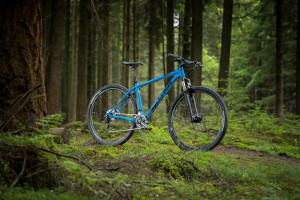


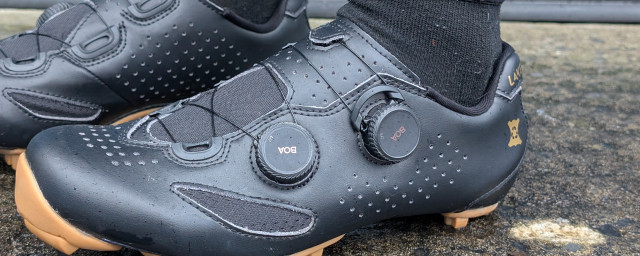
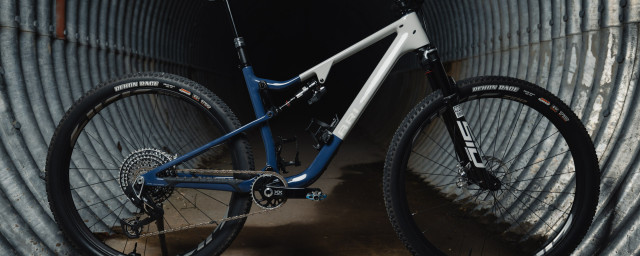
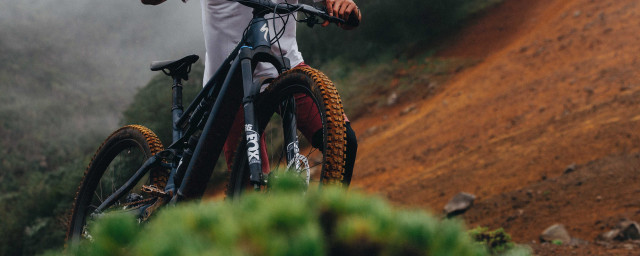
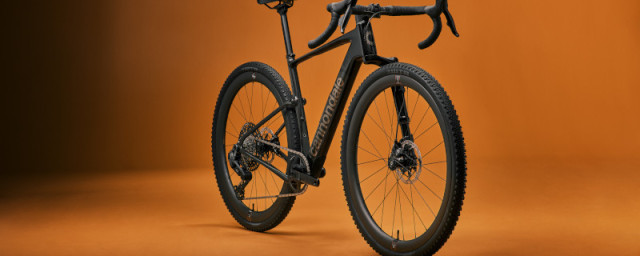
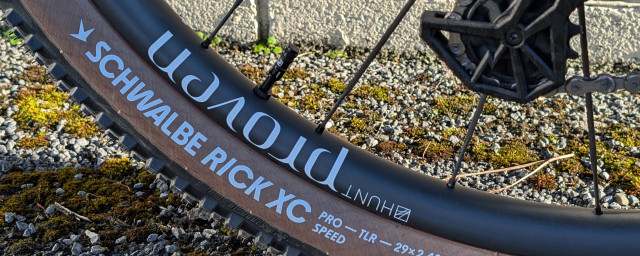

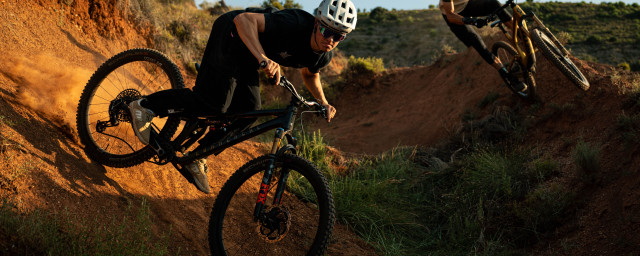
Add comment